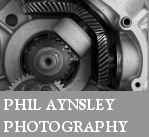


Norton Desmo 1922 - patent extract
Patent 209,882 Nov 15 1922.
James Lansdowne Norton
The object of our invention is to provide improved means for both opening and closing the valves positively so that and the use of springs is obviated, and the engine speed can he increased very substantially beyond the speeds attained at present, so that greater power and efficiency can be obtained from an engine...
Further information: Desmodromology
NOVEMBER 30th, 1922. Page 828
The Olympia Show.
NORTON. (Stand 103.)
High-speed Mounts.
3½ H.P. MODEL.
79x100 mm. (490 c.c.); single cyl. four-stroke; overhead valves: hand pump lubrication; Mills or B. and B. carb.; chain-driven mag.; 3-sp. gear; clutch and kick-starter (optional): chain drive; 26x2½.in. tyres. Price : Solo, £98.
Norton Motors, Ltd., Bracebridge Street, Birmingham.
Chief interest centres round the 490 c.c. overhead-valve-engined Norton, which is the most recent addition to the range of these famous machines. A feature which at once catches the eye is the arrangement of supplementary return movement springs on the push rods. The extra radiating fins at the point where the exhaust pipe leaves the detachable cylinder head are well placed to ensure maximum cooling effect, and the fins on the cylinder barrel itself are brought unusually low down.
Practical riders will be impressed by the thorough way in which the brakework has been carried out on all Norton models. An internally-expanding brake is employed on the front wheel in all cases, whilst that on the back wheel lakes effect with trailing action on a dummy belt rim.
3½ H.P. Model.
79x100 mm. (490 c.c); single cyl. four-stroke: side valves; hand pump lubrication; Mills or B. and B. carb.; chain-driven mag.; 3-sp. gear; clutch and kick-starter; chain drive; 26 x 2½in. tyres. Price: Solo, £79.
No great change has been made to the side-valve Norton, which has always been as fast and powerful as many specially designed o.h.v. machines.
The direct belt driven model is altered only in price; it is now £60, and is one of the very few direct-driven machines above 350 c.c.
"Big Four" (633 c.c.) touring and tradesman's carrier sidecar outfits complete the exhibit, the machine, solo, costing £84, the sidecars varying according to style. The general finish of these machines, especially the clean exterior of the crank case, is commendable.
Olympia Show 1922
The Motor Cycle, November 1922
Advance Details of a New 250 c.c. Model with a Possible Speed of 70 m.p.h.
FOR some time past it has been known to a select few that the famous house of Norton was likely to produce a small engine for next year. We are now permitted to divulge the main features of the new machine, though at the present moment it is not completed.
The 250 c.c. engine (53 x 80 mm.) is a beautiful piece of design, following the lines of the overhead valve racing Norton. Both cylinder and detachable head are very thick in the wall, and are well ribbed for cooling purposes. Overhead valves are set at approximately 45° to the vertical, the port design being excellent. These valves are operated by push rods through overhead rockers, and the reciprocating weight of the push rods is looked after by return springs. Two rings (probably in one groove) will be fitted to the aluminium piston and a very large light gudgeon pin floats both in piston bosses and small end bearing. Steel stampings, each forming a flywheel and crank axle, are employed in the crankshaft construction, the two being united by the crank pin; each is mounted in ball bearings. Both cams are carried on a common shaft, there being only two gear wheels in the cam drive, though rockers are interposed between the cams and the base of the push rods. The magneto is mounted behind the cylinder.
The equipment of the machine itself will be on generous lines. 26 x 2 1/4in. wheels, all chain drive, internal expanding brakes (front and rear) will be features, and it is not unlikely that mechanical lubrication will be fitted to the engine. The frame will have a slightly curved top tube sloping to the rear.
It is hoped that the sports model will exceed 70 miles an hour, and it is possible that Mr. Norton will depart from his usual practice by making two entirely separate engines, similar in outward appearance, but one for purely sporting work and the other for touring.
The increase in the number of small machines is likely to be a feature of the forthcoming Olympia Exhibition, and the advent of a Norton lightweight is bound to attract a very considerable amount of public attention.
The Motor Cycle, September 21st, 1922.